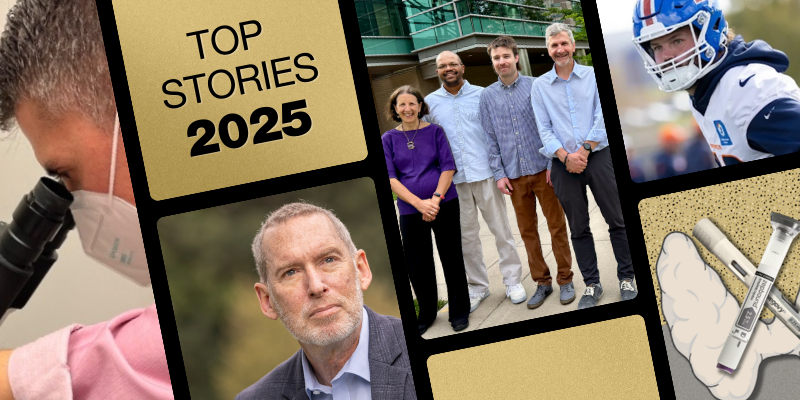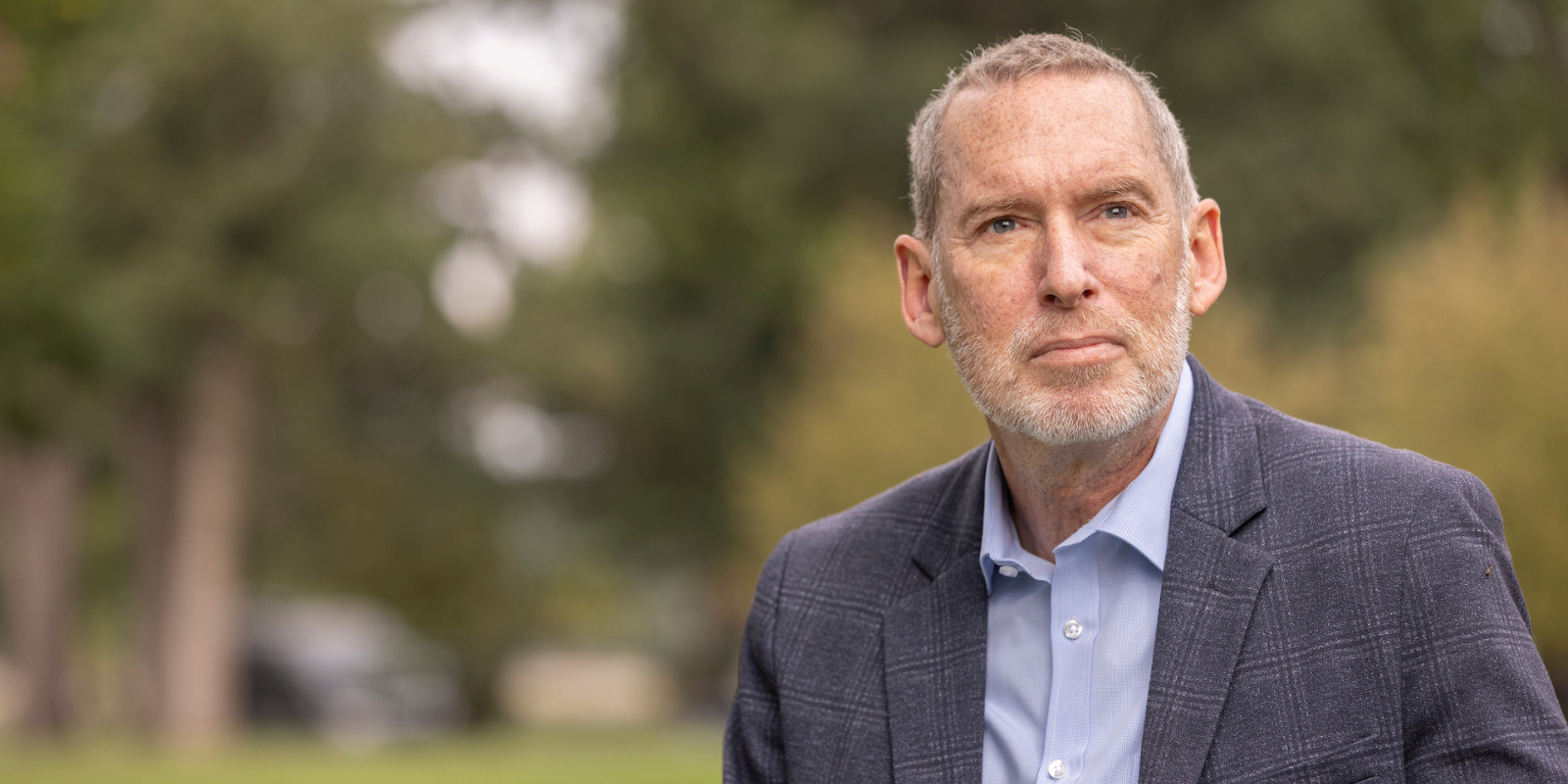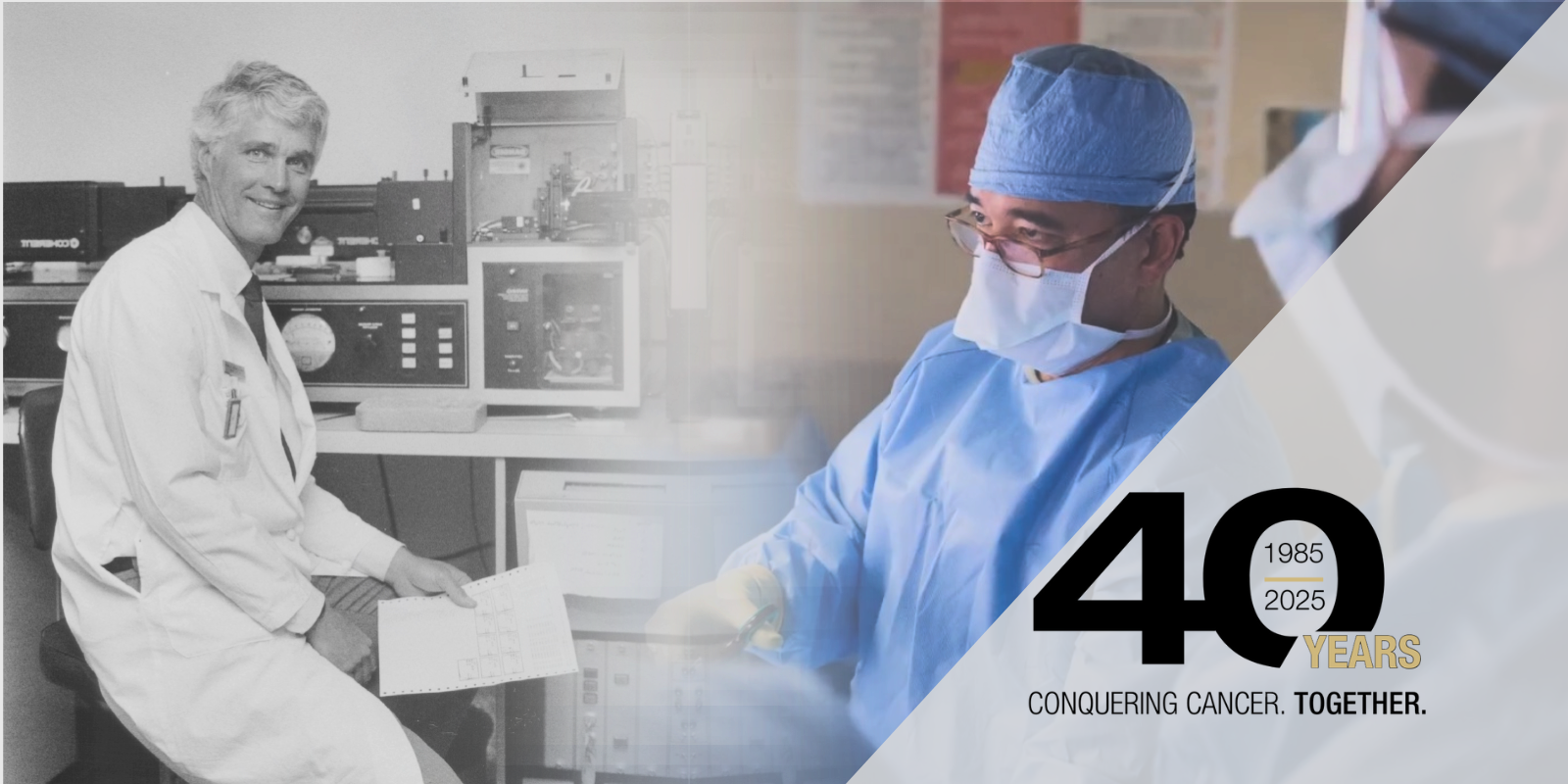It was just a cough – a nagging one, sure, but nothing too serious, Duane Cerniglia thought. Give it some time and it will go away.
It didn’t go away, though, but got worse, to the point that Duane’s wife, Dana, couldn’t sleep through it. She recommended a visit to their family physician, who took an x-ray of Duane’s chest and saw a mass about the size of a tangerine at the top of his right lung.
His mother had died from lung cancer four years previously, at age 72, but still “a part of you just clings to this hope that you’re not going to hear those words,” Duane says.
Duane and Dana had just welcomed their first grandchild, a beautiful boy named Kobe. They were celebrating 17 years together and 13 years married, both having come to their relationship wiser and a little wary from previous marriages. And they’d already weathered one of the worst experiences a person can, the 2003 murder of Duane’s 16-year-old son, Shawn.
Duane was just 56, and it didn’t seem fair. But in June 2014, after initial appointments with a multidisciplinary team at the University of Colorado Cancer Center, biopsy results showed lung cancer. It would have been easy to buckle under the weight of that burden – “and there were many times I was sobbing on our bedroom floor, begging God for help,” Dana says – but ultimately Duane put one foot in front of the other, step after step, miles stretching through years with Dana by his side.
“All I could do was keep going,” Duane says, and he racked up miracle of survival after miracle of survival, until today “I’m a cancer patient, but I don’t have any cancer. I don’t wake up in the morning and say, ‘I’m sick’, I just feel grateful that I have a new day with my family.”
Receiving a lung cancer diagnosis
Lung cancer is still a disease associated with a lot of stigma, says Ross Camidge, MD, a professor of medical oncology and CU Cancer Center member. It’s generally misperceived as a disease always caused by smoking that’s almost always fatal. If someone who gets lung cancer either was or was not a smoker, in addition to the disease they often have to contend with a lot of social stigma and prejudice.
Duane doesn’t hide the fact that he was a half-pack-a-day smoker for almost 40 years, but can cite to the day when he had his last cigarette: June 17, 2014. It was fewer than three weeks after getting the x-ray that showed the shadow in his right lung and Dana beginning an intensive research process that would lead them to the CU Cancer Center.
“My concern was that we were going to have eight different doctors and eight different locations,” Dana recalls. “I found the inspire.com website and started chatting with some of the people on there that were currently dealing with lung cancer or a loved one with lung cancer, and that’s where I first heard about Dr. Camidge. This was Memorial Day weekend, but I found his email and sent him a message and he got right back to us, even though it was a holiday weekend.”
Duane’s first appointment was on May 28, 2014, to have the bronchoscopy – a procedure in which a long, thin tube called a bronchoscope was inserted down Duane’s trachea to see inside his lungs – that showed Duane not only had a tumor at the top of his right lung, but the cancer had spread to some of the lymph nodes in the middle of his chest.
On June 12, Duane first went to the multidisciplinary clinic, where his treatment team decided that “even though this was a big old tumor, we were going to try everything we could to cure him,” Camidge says. “So, we basically threw the kitchen sink at him.”
Duane received chemotherapy and radiation treatments, with the expectation that these therapies would deal with any microscopic cancer that may have migrated to other parts of Duane’s body. He also worked with the clinic’s smoking cessation team to get support in quitting smoking.
It was a rough transition from the physical strength always required of him in the construction industry to an unexpected physical vulnerability. He couldn’t walk far without gulping for air, he was exhausted much of the time, his face became very swollen, and he didn’t respond well to the treatments, Camidge says.
On Sept. 10, Robert Meguid, MD, an associate professor of cardiothoracic surgery, performed a pneumonectomy, the surgery to remove part or all of a lung. Duane recalls consulting with Meguid before the surgery and learning that, depending on what was found, at least part of the lung would be removed, if not the whole lung.
Ultimately, Duane’s entire right lung was removed. Despite the significance of the surgery, though, four days later he was home.
“There was some pain, but I don’t think it was as bad as it could have been,” Duane remembers.
“He seemed to be doing well,” Dana adds. “But then things went south.”
Four months in the ICU
Four days after being discharged, Duane was in the intensive care unit with a fistula, or abnormal communication with the left lung, in the cavity where his right lung had been. He stayed there for more than four months.
“We were losing him,” Dana says. “He was taking steps backward each day.”
Duane had a tracheostomy placed in his throat to help him breathe, but he couldn’t drink for months and couldn’t speak. The cavity where his right lung had become filled with fluid, and his organs began shutting down. He was in and out of comas and experienced intense hallucinations.
“No matter what, they got me out of bed every day, even if I could only take two steps,” Duane says. “I’ll tell you what, I would be exhausted after those two steps. I remember how painful it was to not be able to catch my breath for an hour after, like somebody running a marathon and then can’t breathe.”
“It was so hard on him,” Dana says. “He couldn’t write, he couldn’t speak, he could barely point to things.”
“I couldn’t tell Dana anything,” Duane adds. “She would stand there with a paper trying to get me to write what do I want, what do I need, but I couldn’t write. My brain was still working but my hands wouldn’t work.”
Duane’s brother, Randy Rutenbeck, had been staying with him almost constantly at the hospital, and one late night, after several months of decline in the ICU, Rutenbeck called Dana on her way home from the hospital “and I remember him saying, ‘Duane’s got the team here, we’re going to pull the plug’,” Dana remembers.
“At that moment I was intubated, it had been months, I was miserable and it hurt so bad, and I thought if this is how it’s going to be, let’s just not do it anymore,” Duane says.
“And I would have respected that,” Dana says. “But we cleared the room and I told him, ‘You can make it through this, but I need you to make a decision right now and tell me honestly what to do’. At the time we had a brand new grandson, our first and only grandchild, so that was a motivator, and I told him, ‘Keep your eyes on the prize. You’re coming home’.”
“Determined to stay in the game”
Duane weathered that dark night, and others that followed, including when he developed an infection in the fluid in his right chest cavity. In addition to the team giving him more and more antibiotics, Meguid performed an Eloesser flap, another operation that created a one-way flap in the side of Duane’s torso that allowed the infected fluids to drain from his chest cavity.
Inch by excruciating inch, he progressed in tiny steps and was back home in early January 2015. Duane and Dana began reconfiguring their life together to accommodate necessary changes that would guide Duane back to the life he wanted to live. When he returned to construction management at the building company whose owner and team had wholeheartedly supported him through his journey, he was honest with clients and contractors about his health and why he was using oxygen.
But a scan in April showed cancerous deposits in his brain and the adrenal gland on his right side. “Imagine the psychological stress on Duane and Dana,” Camidge says. “After those four months in the ICU, he went home and we were thinking, ‘OK, we’re just going to see how you do, we’re not going to stir the pot’. To go through all that and still not be cured because a little seed of cancer escaped and we just didn’t know it.”
Duane’s treatment team decided on surgery and a course of radiotherapy, administered by CU Cancer Center member Brian Kavanagh, MD, a professor of radiation oncology, for the spots in his brain and adrenal gland, which bought him a year, Camidge says. In August 2016, a scan showed another cancer deposit in his remaining left lung and Duane received more radiotherapy to treat it.
“I think the term Dr. Camidge uses is ‘weeding the garden’,” Dana says with a laugh. “You find the weed and pull it. I just can’t express how blessed we’ve been to have Dr. Camidge and Dr. Meguid and every other person who’d been part of the team through this.”
Two years following that recurrence, scans showed one more cancerous spot in Duane’s brain, which Kavanagh treated with radiotherapy once again. Duane hasn’t had a cancer recurrence since. In September 2020 he did experience brain inflammation in the dead tissue resulting from the radiotherapy, which Ryan Ormond, MD, PhD, an associate professor of neurosurgery, removed.
“At this point, I’m starting to think of Duane as the multiple miracle man,” Camidge says. “His attitude has been so steady; he’s been so chill and determined to stay in the game. We try not to panic and to put these things in context, but his attitude – his and Dana’s – has played such an important role.”
Grateful for a different approach
Now, Duane says, each new day brings a reason to feel joy. Last year, he and Dana adopted their granddaughter Remington, who they call Remy and who just turned 4. She keeps them on their toes, and delights in things like going fishing and afternoon trips to the park.
Dana’s 26-year-old son from her first marriage lives with the family and helps with things like lawn mowing, while Duane’s son who lives in Nevada checks in frequently.
Duane exercises most days to build up his stamina, and Dana stays in touch with people she met through support groups. It isn’t perfect, they say, but when is life ever perfect? It’s happy, and it’s theirs.
“I think about everything I read about lung cancer when I first got on the internet,” Dana recalls, “just these depressing statistics. Luckily, we met Dr. Camidge and he had this whole different approach.”
“I’ve had years I might not have had otherwise,” Duane adds, “and every day I’m grateful.”




